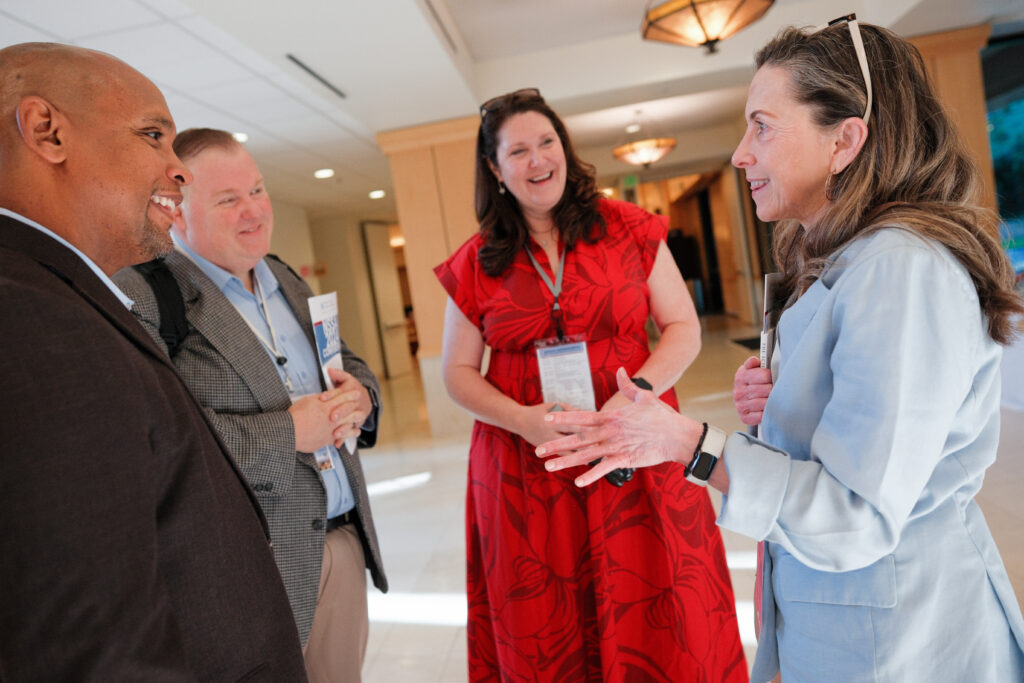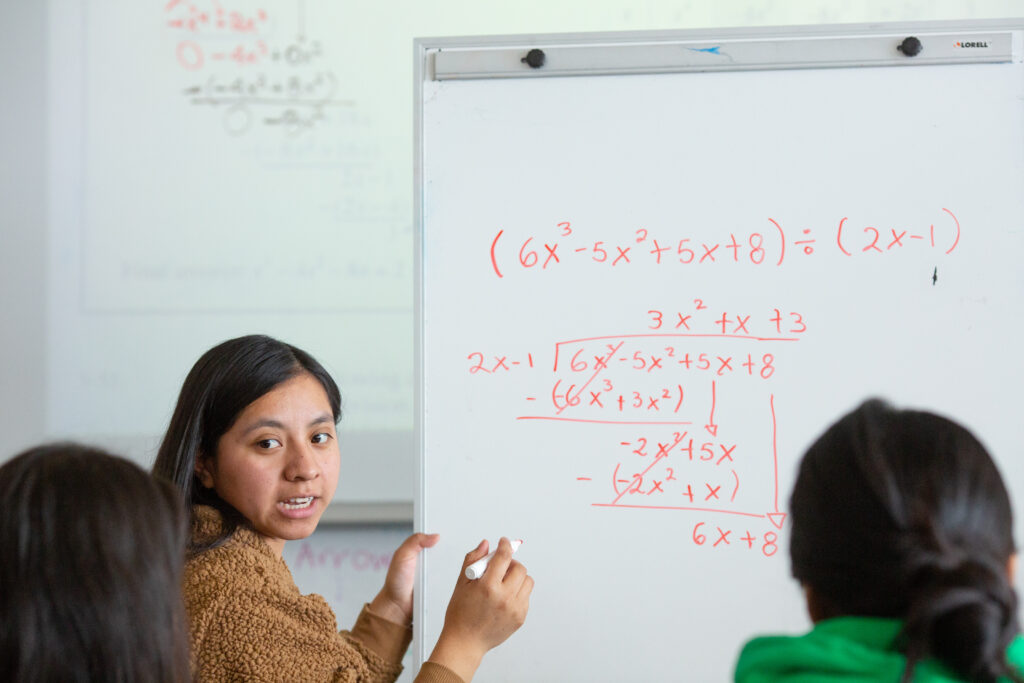The start of a new school year brings anxiety for many students, on top of a growing mental health crisis in young people. How can schools help ease the pressure? For starters, says Stanford scholar Denise Pope, listen to what students say they’re facing.
“If we want to understand what students are going through, we need to center their voices and really hear what they’re telling us,” said Pope, a senior lecturer at Stanford Graduate School of Education (GSE) and co-founder and strategic advisor at Challenge Success, a school reform nonprofit affiliated with the GSE. “Then we can take a look at strategies to respond.”
Since 2010, Challenge Success and the GSE have been conducting surveys and focus groups with middle- and high-school students on many aspects of their lives, from the stresses of schoolwork and family expectations to the amount of sleep they get each night. In a new report, researchers at Challenge Success shared highlights of the data they’ve collected over the past two decades from more than 270,000 students at 380 high schools across the country. Their findings also informed the organization’s SPACE Framework for School Change, a set of policies and practices for schools to help improve student well-being, belonging, and engagement.
Pope is the author of Doing School: How We Are Creating a Generation of Stressed-Out, Materialistic, and Miseducated Students, and coauthor of Overloaded and Underprepared: Strategies for Stronger Schools and Healthy, Successful Kids. She also co-hosts the School’s In podcast with GSE Dean Dan Schwartz, discussing the future of teaching and learning with expert guests, and is a faculty affiliate of the Stanford Accelerator for Learning.
Here, she talks about some of the issues weighing most heavily on students and offers some steps educators can take to address them.

In your surveys, homework is one of the biggest sources of stress that students report. How do you recommend schools respond to that?
The conversation about homework is usually about whether students have too much or not enough. But it really should be about the quality of homework and whether it’s meaningful to students. What’s the purpose of an assignment? Does it engage students and encourage them to apply what they’ve learned in different ways? Or is it just about practicing rote skills?
There’s very little research on homework that shows a clear benefit, particularly in the younger grades. The impact is hard to measure, because once students go home, you don't know who's doing the work. People assume that if students’ grades improve or they do better on standardized tests, homework must be helping — but very few studies actually isolate the effects in a way that can be attributed to homework.
When students see homework as busywork, or if assignments are too hard or too easy, kids can become disengaged in school in general. In California we worked with legislators on a bill requiring districts to establish a homework policy that considers the impact on students’ health, and to get buy-in from not only the educators but also parents and students. The bill passed unanimously in the Assembly and will go to the Senate next.
Your surveys show that tests are also a major source of stress for students. But how can teachers assess students’ progress without regular testing?
In the real world, you’re almost never told that you’re going to be assessed tomorrow, it’s going to be timed, and you can’t use any of the resources you’d normally use, like your computer or talking to colleagues. And yet that’s how we assess students’ mastery. It’s ridiculous.
Tests and quizzes can only show so much about what a student knows, and they’re often stressful because they’re usually high stakes, connected to grades or the ability to move on to the next level. Many students suffer from test anxiety on top of that, so even if they know the material, the pressure may make them forget it or freeze up, and they don’t do as well.
A much healthier and more accurate way to assess kids’ understanding is through what we call performance-based assessments, which might be a project, a research paper, a lab report, or a debate or exhibition. Or teachers can hold one-on-one meetings with students. We also suggest giving students opportunities to assess their peers and themselves. These performance assessments can be effective ways to get feedback and solidify concepts, and they more authentically replicate the kind of tasks students do outside of school, including work they’ll do in college and in their careers.
Another big issue that comes up in your surveys is sleep. You found that students who get more sleep also say they have an easier time coping with stress, but many report that they don’t get enough. How can schools address that?
High school students on average tell us they’re getting 6.6 hours of sleep on a typical school night, which is significantly less than the 8 to 10 hours recommended for that age group. It’s easy to pin the blame on cell phones and social media, and that’s part of it, but these findings have been consistent for over two decades.
If you think about teens and their natural sleep patterns, they’re fairly nocturnal when they hit adolescence. Their circadian rhythms shift, and at night when your teenager says, ‘I’m not tired,” it’s probably true. But if the school day starts at 7 or 7:30am and kids have to get up around 5 or 6 to catch the bus, that’s too early for their well-being.
California recently passed a law mandating later school start times, and several other states are following with their own proposals. Students often tell us they treasure that extra hour. Many are using it to get more sleep, and others say they now have time to eat breakfast or use it to finish homework in the morning when they are more alert instead of late at night.
We’re not suggesting schools just take their current schedule and push everything by an hour. At Challenge Success we work with them to make their schedule more efficient within a later start time. For instance, does homeroom need to happen every day, or can you make it slightly longer and meet just once a week? Can you implement a block schedule, which cuts back on transition times throughout the day? Both of these changes can save minutes in the day, but if they’re implemented well can also improve student learning. We know schools might run into issues with things like parents’ schedules and after-school activities, so we get creative with schedules and tailor changes to what schools need.
Many students you surveyed, especially historically marginalized groups, said they don’t feel a sense of belonging at school. What do you advise schools to do about that?
It’s important for students to feel safe, seen, and supported. Students in our surveys who identify as girl/woman, or Black, or gender-diverse reported a significantly lower sense of belonging than other groups, which really highlights the need for more inclusive environments at school.
We encourage schools to look for ways to strengthen connections between students and teachers, and among students themselves. Try to build little moments of connection — a quick icebreaker at the start of class, or an advisory period where a teacher gets to connect with a small group of kids once a week. Check in with students who might feel marginalized. Even little things matter, like knowing students’ names and pronouncing them correctly, saying hi to them in the hallway, or checking in after they’ve missed a day of school. When school feels like a community, you're going to want to be there and be a part of it.
It was sobering to see the majority of students in your surveys reporting that, essentially, they don’t enjoy school. How can we get students more into learning?
Every assignment should have a clear purpose, where students know how the lesson can be applied outside the classroom. Even with students who are showing up, working hard, completing their assignments — a lot of them are just “doing school,” going through the motions but not seeing the meaning or purpose or value in it.
We know how to design purposeful, exciting learning experiences for kids, but it takes effort. Where possible, try to connect activities to students’ personal backgrounds and interests, and offer them “voice and choice.” There are a variety of ways to do this, from allowing students to choose which problems to do from each section of a math worksheet to designing their own paper topic or revamping the curriculum around student-led projects.
There’s a great example of a school where kids built their own skateboards and ramps because that’s what the kids were interested in. It’s a project that involves physics, math, engineering, critical thinking, teamwork — it becomes a very authentic learning experience, and the kids are motivated.
This is how school comes to be a place where you want to be, because you’re doing interesting things and you can see your place in the world.



